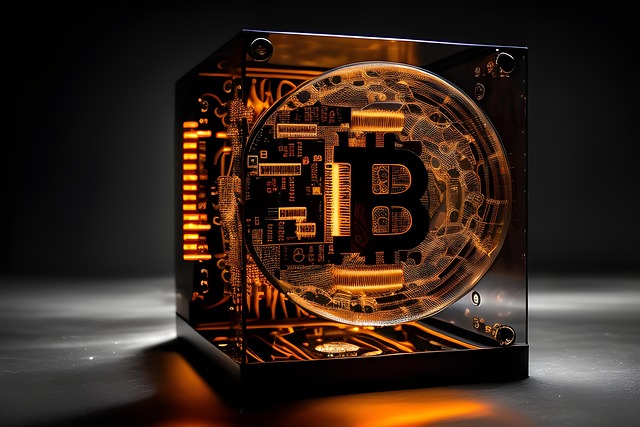Is Cardano a Good Crypto in 2025? A Balanced Guide
Author: Jameson Richman Expert
Published On: 2025-11-03
Prepared by Jameson Richman and our team of experts with over a decade of experience in cryptocurrency and digital asset analysis. Learn more about us.
Is Cardano a good crypto is one of the most common questions investors, developers, and crypto-curious people ask in 2025. This comprehensive guide breaks down Cardano’s technology, roadmap, real-world use cases, tokenomics, strengths and weaknesses, how it compares to rivals like Ethereum, and practical steps to buy and stake ADA. By the end you’ll have a data-driven view and an actionable checklist to decide whether Cardano fits your goals.

Quick answer: Is Cardano a good crypto?
Short answer: it depends. Cardano (ADA) is a technically robust, energy-efficient proof-of-stake blockchain with strong academic foundations, active development, and a growing ecosystem. For buyers prioritizing sustainability, staking income, and long-term infrastructure plays, Cardano can be an attractive option. For traders chasing short-term DeFi yields or the largest developer ecosystems, other chains may currently offer more opportunities. Below we unpack everything to help you decide.
What is Cardano? (Foundations and history)
Cardano is a third-generation blockchain project launched in 2017 by Charles Hoskinson, co-founder of Ethereum. Built with a research-first approach, Cardano aims to provide a scalable, secure, and interoperable platform for decentralized applications and digital assets. The native cryptocurrency is ADA.
- Official website: cardano.org
- Project overview: Cardano — Wikipedia
Core technology and architecture
Understanding Cardano’s tech helps answer whether it’s a “good” crypto for your use case.
Ouroboros: Proof-of-Stake Consensus
Cardano uses Ouroboros, a provably secure proof-of-stake (PoS) protocol. Compared with proof-of-work chains, PoS is far more energy-efficient, granting ADA an environmental and cost advantage.
Layered Architecture
Cardano separates the ledger into two layers: the Cardano Settlement Layer (CSL) for ADA transactions and the Cardano Computation Layer (CCL) for smart contracts. This modular approach aims to make upgrades and governance easier and safer.
Smart Contracts: Plutus and Marlowe
Cardano uses Plutus for general-purpose smart contracts and Marlowe for financial contracts. The platform emphasizes formal verification, meaning developers can mathematically prove certain behaviors — a plus for security-sensitive applications.
Scaling: Hydra and Sidechains
Hydra is Cardano’s layer-2 scaling protocol promising high throughput with low latency. Sidechains and other scaling solutions are in active development to boost transaction capacity for mass adoption.

Roadmap and major upgrades (Byron → Voltaire and beyond)
Cardano’s roadmap has distinct phases: Byron (foundation), Shelley (decentralization), Goguen (smart contracts), Basho (scaling), and Voltaire (governance). Many core milestones are live, and development continues into 2025 with ecosystem growth, improved tooling, and scaling upgrades such as Hydra.
For a sense of real-world infrastructure and transfer times across chains, you may find practical guides useful — for example, this Ethereum transfer time guide helps compare user experiences across networks.
Strengths: Why Cardano can be a good crypto
- Energy efficient: PoS significantly reduces energy consumption versus PoW chains.
- Formal methods and research-driven: Academic peer-reviewed research underpins protocol changes, increasing security and robustness.
- Staking rewards: ADA holders can earn passive income by staking or delegating to pools.
- Modular architecture: Separating settlement and computation layers helps with upgradeability and governance.
- Growing ecosystem: More dApps, DeFi primitives, and NFT platforms are launching on Cardano.
- Governance roadmap: Voltaire aims to enable community-led funding and decentralized decision-making.
Weaknesses and risks
No crypto is perfect. The main limitations and risks for Cardano include:
- Slower developer adoption: Historically, Cardano trailed Ethereum in developer tooling and DeFi TVL. That gap is narrowing but remains relevant for DeFi-focused investors.
- Perception of slow progress: Cardano’s methodical, research-first approach results in longer development cycles, which some see as a competitive disadvantage.
- Smart contract maturity: While improving, the maturity and composability of Cardano dApps remain behind the most active ecosystems.
- Concentration risks: Early stake distribution and protocol control debates can create centralization concerns if not continuously addressed.
- Market volatility: As with all crypto assets, ADA is volatile; macro events, regulation, and sentiment swings affect price.

How Cardano compares to Ethereum and other Layer 1s
Comparisons help determine fit based on goals:
- Energy use: Cardano (PoS) uses far less energy than Ethereum was using before its PoS transition, and remains efficient relative to many other chains.
- Fees: Cardano’s fees are generally lower than Ethereum’s legacy fees, though L2s on Ethereum have narrowed the gap.
- Developer ecosystem: Ethereum maintains a larger developer base, more tooling, and higher DeFi TVL; Cardano is growing but remains smaller.
- Security and formal verification: Cardano’s emphasis on academic rigor gives it an edge in safety for high-assurance applications.
- Adoption speed: Chains like Solana prioritized rapid growth and have high throughput, yet face trade-offs in decentralization and stability.
Practical comparison: Use-case lens
- If you want to build secure, regulated financial contracts that require formal verification, Cardano’s tooling (Marlowe, Plutus) can be a strong fit.
- If you need maximum composability, liquidity, and the broadest DeFi integrations today, Ethereum-based ecosystems may be preferable.
- If your priority is low fees and energy efficiency for payments or NFTs, Cardano is competitive.
Tokenomics and on-chain economics
ADA’s supply economics and staking dynamics affect its investment case.
- Circulating supply: ADA has a capped supply with gradual issuance through staking rewards. Check current figures on trusted trackers like CoinMarketCap or CoinGecko.
- Inflation & rewards: New ADA issuance funds staking rewards and network incentives. Staking returns fluctuate with participation rates.
- Utility: ADA pays network fees, secures consensus through staking, and is used in governance and treasury mechanisms as Voltaire features mature.
Investment perspective: scenarios, risks, and metrics
When deciding “is Cardano a good crypto” for investment, consider these metrics and scenarios.
Key metrics to watch
- Developer activity (GitHub commits, tooling updates)
- TVL (Total Value Locked) in DeFi on Cardano
- Active addresses and transaction count
- Adoption by institutions/governments (e.g., identity projects)
- Staking participation rate and effective yields
Investment scenarios
- Long-term infrastructure bet: If Cardano successfully attracts developers and consumer apps, ADA’s value may appreciate as network utility increases.
- Yield-focused holder: Staking ADA can provide steady returns for conservative long-term holders.
- Speculative trader: Short-term traders can profit from volatility but face higher risk relative to fundamental holders.
- Not a fit: If you require immediate high-yield DeFi strategies or maximal liquidity today, Cardano may be less attractive than other chains.

How to buy ADA (practical guide)
Buying ADA is straightforward. Choose a reputable exchange, complete KYC, deposit funds, and place a buy order. Below are established exchanges where ADA trading is available (affiliate/referral links provided):
- Register on Binance — one of the largest global exchanges by volume and liquidity.
- Sign up on MEXC — supports many altcoins and spot trading.
- Create a Bitget account — offers trading and derivative products.
- Join Bybit — popular for margin and derivatives as well as spot markets.
After buying, you can hold ADA on exchanges (less secure for long-term), or move to your own wallet for custody and staking.
Recommended wallets and staking options
- Daedalus — full-node desktop wallet maintained by IO Global for maximum decentralization.
- Yoroi — lightweight browser and mobile wallet made for easy staking and daily use.
- Hardware wallets — Ledger and Trezor support ADA for secure cold storage.
How to stake ADA (step-by-step)
Staking ADA is one of Cardano’s strongest user value propositions. Below is a simple process to stake ADA via a wallet like Yoroi or Daedalus:
- Buy ADA on an exchange and withdraw to your Yoroi or Daedalus wallet.
- Open the staking/delegation tab in your wallet and choose a stake pool. Consider pool fees, performance, and saturation.
- Delegate your ADA to the pool. There is no lock-up; you can change delegation anytime, though rewards adjust on epoch cycles.
- Earn rewards on an epoch cadence (each epoch lasts ~5 days). Rewards compound if you re-delegate or leave them in the same pool.
Delegation keeps custody of your ADA — it does not transfer tokens to the pool operator, mitigating counterparty risk.
Real-world use cases and projects on Cardano
Cardano’s ecosystem includes DeFi, NFT marketplaces, identity and government pilots, and supply chain solutions. Examples include:
- NFT marketplaces and minting platforms
- Decentralized exchanges (DEXs) and AMMs
- Identity and credential systems like Atala PRISM
- Supply chain and traceability pilots in emerging markets
Adoption can come from developing countries adopting Cardano for identity, payments, or digital infrastructure — a key part of Cardano’s targeted impact strategy.

Security and regulation
Cardano benefits from a conservative approach to protocol changes and formal verification, improving security. Nonetheless, users must remain vigilant: smart contract exploits, wallet phishing, and exchange hacks are real threats. For trading or sensitive transfers, review security practices and transfer-time expectations — see guides like this Ethereum transfer time guide for comparable network behavior considerations.
Regulatory environments vary across jurisdictions. Institutional adoption often depends on legal clarity, which is improving in many regions as regulators publish guidance on crypto custody, taxation, and KYC. Always consult local legal or tax advisors for compliance.
Practical trading and strategy resources
If you plan to trade ADA or use trading tools, practical guides and pricing information are essential:
- Analyze charting costs and tools with resources like this TradingView pricing guide to select the right charting subscription.
- If you’re exploring automated trading, read up on bot strategies such as those in this crypto day trading AI bot guide.
- For exchange-specific considerations like whether spot trading on Binance fits your personal rules, see analyses like this Binance spot trading halal analysis.
- If you intend to use custodial exchanges or move between them, this Kraken selling guide is useful for secure transactions across platforms.
Checklist: Is Cardano right for you?
Use this checklist to evaluate whether Cardano matches your investment or development needs:
- Are you focused on long-term network value and adoption rather than short-term speculation?
- Do you value energy efficiency and a research-driven protocol?
- Do you plan to stake ADA for passive income?
- Are you developing applications that benefit from formal verification or regulated environments?
- Can you tolerate potential slower rollout of features in exchange for higher assurance?
If you answered “yes” to most, Cardano could be a good crypto for your portfolio or project goals.

Frequently Asked Questions (FAQ)
Is Cardano better than Ethereum?
“Better” depends on priorities. Ethereum leads in developer activity and DeFi liquidity; Cardano leads in formal verification, energy efficiency, and academic approach. Both have strengths; many projects choose their platform based on application needs.
Will Cardano’s price go up?
Price projections are speculative. ADA’s long-term value depends on adoption, developer activity, macro crypto markets, and on-chain utility. Use fundamental and technical analysis and avoid relying solely on price forecasts.
Can I stake ADA on exchanges?
Yes, many exchanges offer staking services. You can also stake from non-custodial wallets (recommended for control). Be aware of exchange custodial risk and withdrawal restrictions.
Are Cardano smart contracts secure?
Cardano emphasizes security with formal verification and careful rollout. However, smart contract security also depends on developers and audits. Always perform due diligence on projects and audits before interacting with dApps.
Further reading and recommended resources
Deepen your research with these resources:
- Cardano official site: cardano.org
- Cardano Wikipedia: Cardano — Wikipedia
- Trading and technical resources: TradingView pricing guide, AI bot strategies
- Exchange and trading considerations: Binance spot trading analysis, Kraken selling guide
- Cross-chain and transfer insights: Ethereum transfer time guide
Final verdict: Is Cardano a good crypto in 2025?
Answering is Cardano a good crypto requires clarifying your objectives:
- If you value sustainability, strong formal security, and earning staking rewards with minimal lock-ups, Cardano is a compelling option.
- If your priority is the largest developer ecosystem and fastest access to DeFi liquidity, Ethereum and some high-throughput chains currently offer more immediate opportunities.
- For many investors and developers, Cardano represents a meaningful diversification play — blending long-term infrastructure potential with staking yields and real-world project focus.
In short: Cardano is a “good” crypto for many long-term, security-conscious, and sustainability-minded participants. It is less optimized for traders seeking immediate, maximal DeFi yields. As always, combine technical research, on-chain metrics, and risk management before investing. If you decide ADA fits your strategy, use reputable exchanges and proper custody — for example, register on major platforms like Binance, MEXC, Bitget, or Bybit, and consider moving long-term holdings to secure wallets like Daedalus, Yoroi, or a hardware wallet.
If you want, I can:
- Provide a personalized checklist tailored to your risk tolerance and time horizon
- Compare Cardano and Ethereum using current TVL and developer metrics
- Walk you through staking ADA step-by-step for a specific wallet
Which would you like next?